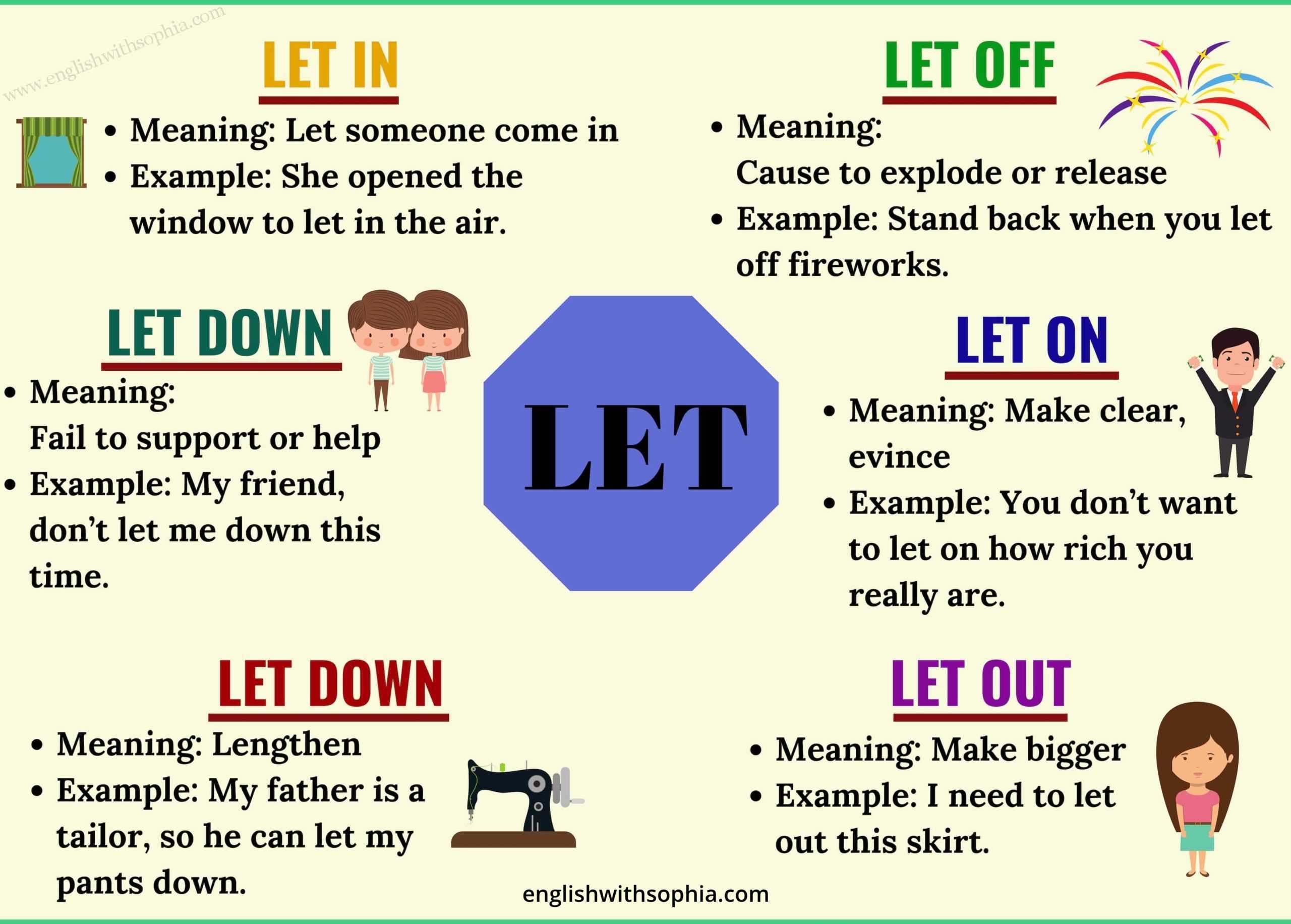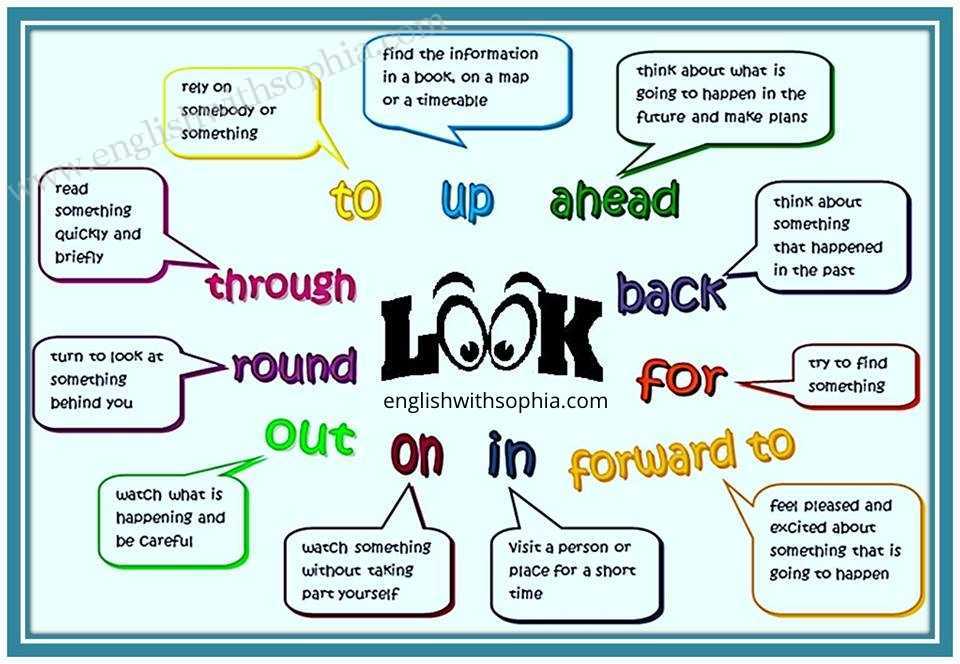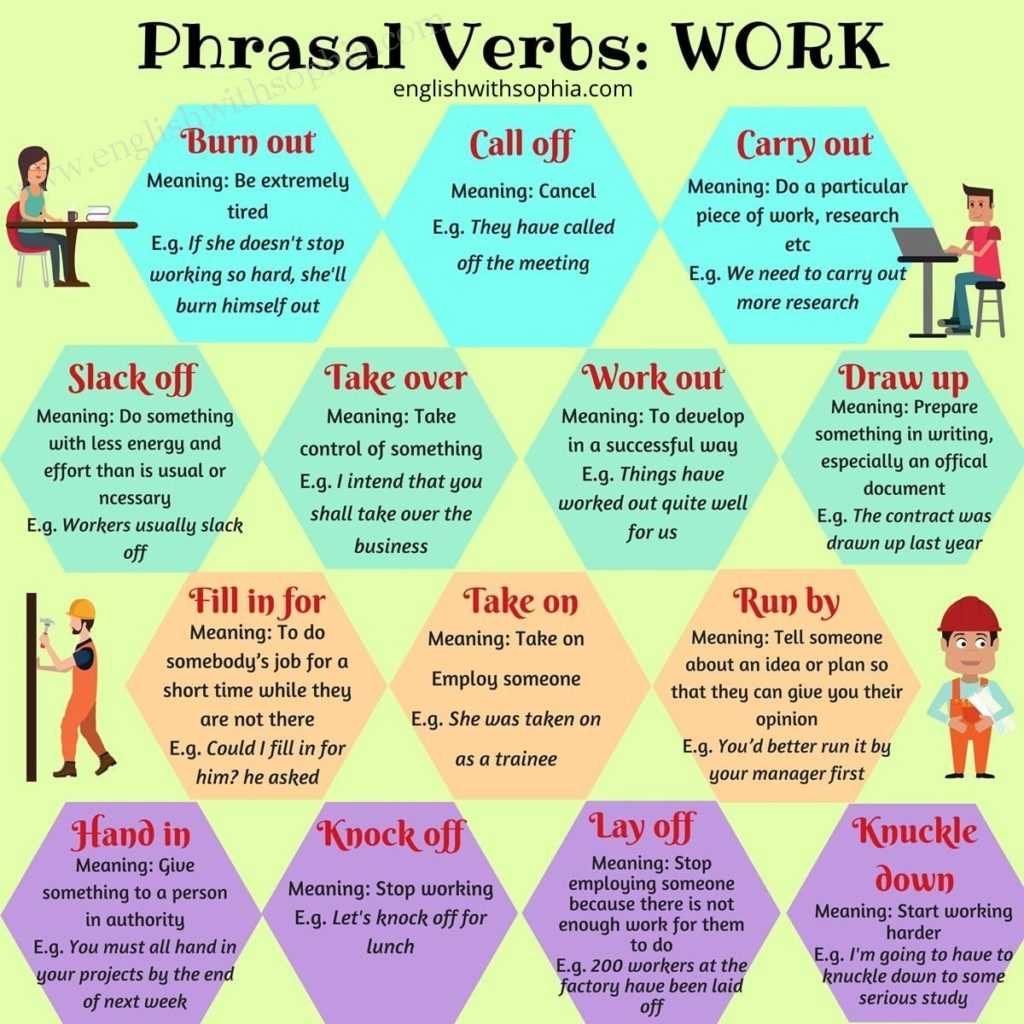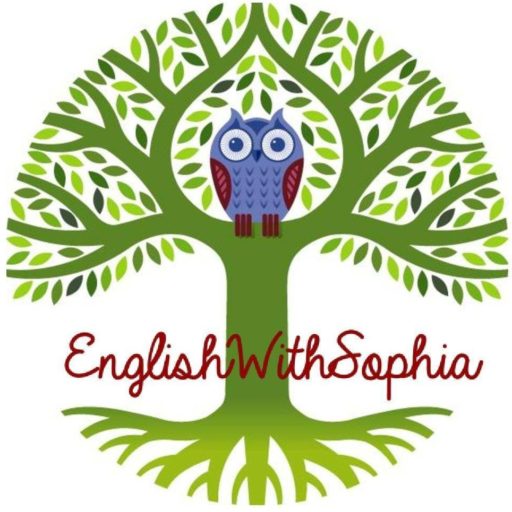What’s the difference between phrasal verbs LET, GET, LOOK and WORK?
A phrasal verb is a phrase that combines a verb with a preposition or adverb or both and that functions as a verb whose meaning is different from the combined meanings of the individual words.
For example, ‘give up’ is a phrasal verb that means ‘stop doing’ something, which is very different from ‘give’. The word or words that modify a verb in this manner can also go under the name particle.
Phrasal verbs can be divided into groups:
Intransitive verbs These don’t take an object They had an argument, but they’ve made up now.
Inseparable verbs The object must come after the particle. They are looking after their grandchildren.
Separable verbs With some separable verbs, the object must come between the verb and the particle: The quality of their work sets them apart from their rivals. With some separable verbs, the object can before or after the particle, though when a pronoun is used it comes before the particle:
Turn the TV off. Turnoff the TV. Turn it off.
Here you have some infographics of four of the most commonly used phrasal verbs, LET, GET, LOOK and WORK. By the way, using infographics will help you remember much better the different meanings of these phrasal verbs, which to be honest are quite tricky for English learners.
Hope you find it useful !






Comments are closed